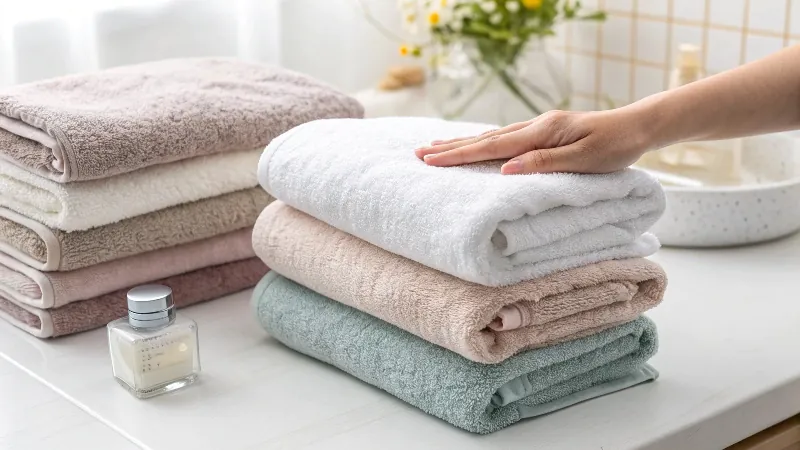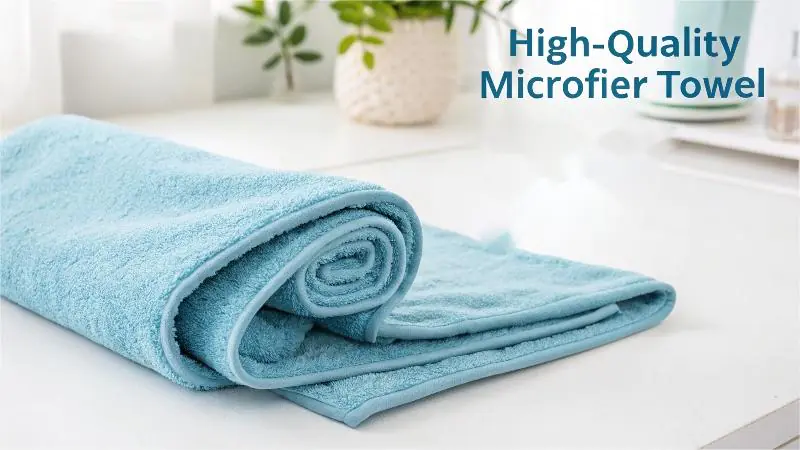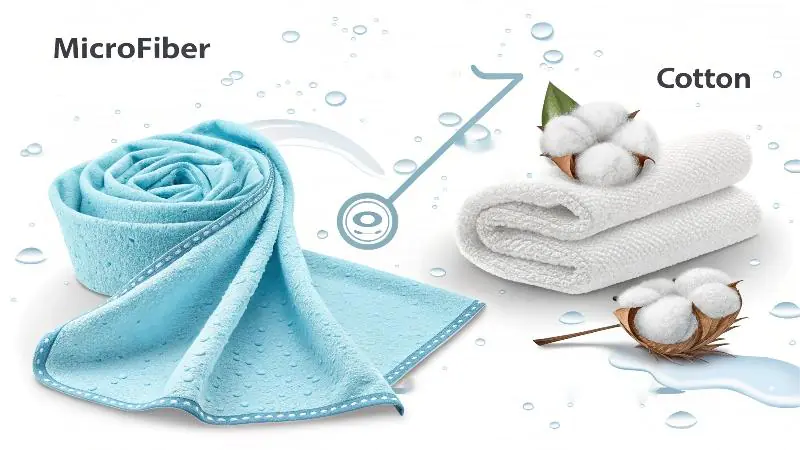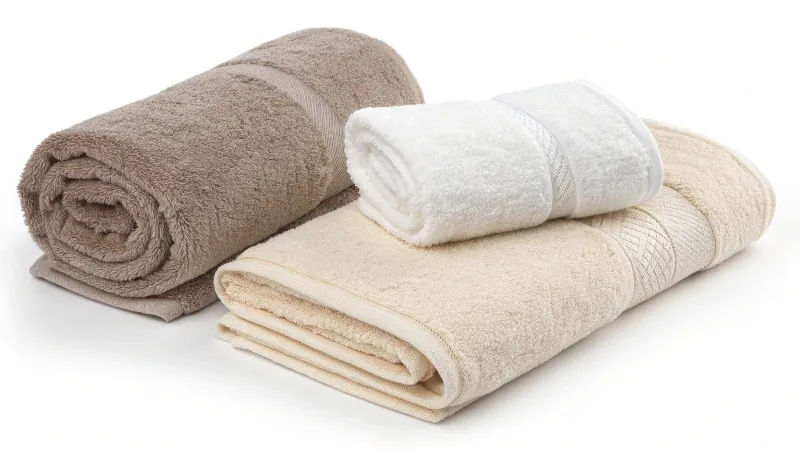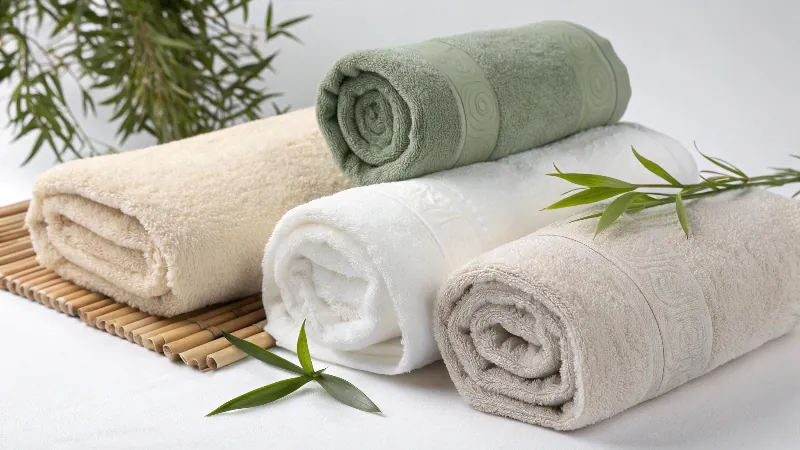Your skin feels tight and irritated after drying it with a towel. The wrong towel texture can be abrasive, stripping away your skin’s natural protective barrier and causing unseen damage.
Yes, high-quality microfiber towels are generally good for your skin, especially if it’s sensitive or acne-prone. Their fine fibers gently lift water and dirt without harsh rubbing. The key is to choose a quality towel and pat your skin dry rather than scrubbing it.
Over my many years in the textile industry, the "microfiber versus cotton" debate has come up countless times. I’ve guided spa owners, hotel chains, and direct-to-consumer brands through this exact decision. They all want to know what material will provide the best experience for their customers and keep them coming back. The answer isn’t always simple, as the "best" towel often depends on the specific use case and skin type. To give you the clarity you need for your own brand, let’s break down the most common questions I hear. This will help you make a confident decision.
Is microfiber towel safe for skin?
You’ve heard that microfiber is essentially plastic, and you’re worried about rubbing it on your skin. Low-quality versions can feel scratchy, raising concerns about safety and potential irritation.
Yes, a high-quality microfiber towel is completely safe for your skin. The safest options are made from split polyester and polyamide fibers, which are exceptionally soft and non-abrasive. To ensure safety, always pat your skin dry and choose towels with an OEKO-TEX certification, which guarantees they are free from harmful substances.
What Defines a "Safe" Microfiber?
The safety of a microfiber towel comes down to its construction. I always tell my clients to look for "split" microfiber. During manufacturing, the fibers—typically a blend of polyester and polyamide—are split into ultra-fine strands. This process creates an enormous surface area with a positive charge that acts like a magnet for negatively charged water and dirt particles. This means you can effectively dry your skin with gentle patting instead of harsh rubbing. In contrast, cheap, non-split microfiber feels like a basic cleaning cloth because it lacks this advanced structure. It forces you to scrub, which can easily irritate the skin.
Addressing Potential Concerns
When a brand owner is considering microfiber, they usually ask about two things: abrasiveness and chemical content. A simple test I recommend is to gently rub the towel on an old CD. If it leaves fine scratches, it’s too harsh for skin. More importantly, we talk about certifications. This is non-negotiable for me. An OEKO-TEX STANDARD 100 label is your proof that the towel has been tested and found free of a long list of harmful substances. It provides peace of mind that the product is safe from the raw materials to the final stitch.
Is microfiber better for skin than cotton?
You love the classic, plush feel of a cotton towel. But you wonder if its texture and slow-drying nature are actually good for your skin, or if a modern alternative is better.
For many situations, yes, microfiber is better for skin than cotton. It absorbs water more effectively with less friction, and it dries much faster, which prevents bacteria and mildew growth. Cotton can be very absorbent but often requires more rubbing and can irritate sensitive skin.
A Direct Comparison for Skin Health
When a hotel client needs to choose between microfiber and cotton, I often lay out the facts in a simple table. They need to balance guest comfort with practical concerns like hygiene and laundry efficiency. The differences become very clear when you look at them side-by-side.
| Feature | High-Quality Microfiber | Traditional Cotton Terry |
|---|---|---|
| Drying Action | Lifts water efficiently with a gentle pat. | Absorbs water slowly; often requires rubbing. |
| Skin Gentleness | Very soft and smooth, minimal friction. | Can feel rough, especially if not high-GSM. |
| Hygiene | Dries extremely fast, inhibiting bacteria growth. | Stays damp for hours, creating a breeding ground for germs. |
| Best For | Sensitive, oily, or acne-prone skin; makeup removal. | Normal skin; users who prefer a heavy, plush feel. |
Why Use Case Matters Most
I remember working with a brand launching a line of premium gym towels. Their initial request was for thick, absorbent cotton. I convinced them to test a microfiber sample alongside it. The feedback was unanimous. The microfiber towel not only dried skin faster after a workout but also dried completely in their gym lockers, avoiding that musty odor common with damp cotton towels. It showed them that "better" depends entirely on the situation. For athletic or travel use, microfiber’s quick-dry and lightweight properties are superior. For a luxurious, spa-like feel at home, high-quality cotton still has its place.
Which type of towel is best for skin?
Walking through a linen store or browsing online, the sheer number of towel types is overwhelming. Picking the wrong one could mean unhappy customers and even bad reviews about skin irritation.
The best towel type depends entirely on your skin. For sensitive or acne-prone skin, a soft microfiber or a smooth bamboo towel is ideal. For normal skin, a high-quality, long-staple cotton like Pima or Egyptian provides a luxurious feel without being too harsh.
Matching the Material to the Skin
There is no single "best" towel for everyone. My job is to help brands understand the nuances so they can serve their target audience perfectly. It all starts with identifying the user’s primary skin concern.
- For Oily & Acne-Prone Skin: I almost always recommend microfiber. Its ability to lift oil and bacteria from the skin’s surface without aggressive rubbing is a huge advantage. Scrubbing can stimulate more oil production and spread bacteria, so the gentle "pat dry" method with microfiber is perfect.
- For Sensitive & Eczema-Prone Skin: Bamboo fabric is a star performer here. It is naturally hypoallergenic and has a silky, smooth texture that glides over irritated skin without snagging or causing friction. A high-grade, very soft microfiber is a strong alternative.
- For Normal & Dry Skin: This is where long-staple cottons, like Egyptian or Pima, shine. They offer that thick, plush, and highly absorbent feel many people crave. The key for dry skin is still to pat, not rub, to ensure you don’t strip away the skin’s natural oils.
Beyond the Fiber: The Weave
The material is only half the story; the weave is just as important. A waffle weave, which can be found in both cotton and microfiber, creates pockets that increase absorbency while offering very light exfoliation. A classic terry loop is the fluffy standard, but lower-quality terry can have rough, uneven loops that are abrasive. A flat weave, common in Turkish towels, is less absorbent but extremely gentle and quick to dry.
What is the healthiest material for towels?
You want to offer a product that is not just soft, but truly healthy for your customers. Many textiles are made with hidden chemicals or unsustainable practices, creating a risk for both skin and conscience.
The healthiest towel materials are natural, sustainably sourced, and certified free of harmful substances. Organic cotton (GOTS certified), bamboo lyocell, and linen are excellent choices. They are naturally hypoallergenic, breathable, and gentle, ensuring the purest contact with the skin.
The Top Tiers of Healthy Textiles
When I work with brands in the wellness or baby-care space, "healthy" becomes our primary focus. This means we look at materials that are good for the user and kind to the planet.
- GOTS-Certified Organic Cotton: This is the gold standard for cotton. It’s grown without toxic pesticides and processed without harsh chemicals like chlorine bleach or formaldehyde. The Global Organic Textile Standard (GOTS) certification is crucial because it ensures strict environmental and social criteria are met from the farm to the finished towel.
- Bamboo Lyocell (not Viscose): Bamboo is famous for its softness and natural antimicrobial properties. However, it’s vital to choose bamboo lyocell (often branded as TENCEL™). This type is produced in a closed-loop system that recycles nearly all water and solvents, making it far more eco-friendly than bamboo viscose, which uses a chemically-intensive process.
- Linen: Made from the resilient flax plant, linen requires minimal water and pesticides to grow. The fabric is incredibly durable, naturally antimicrobial, and becomes softer with each wash. It’s a timeless, healthy choice.
Why I Insist on Certifications for Health
A towel can be made from a "natural" fiber, but that doesn’t guarantee it’s healthy. The dyeing and finishing processes can introduce harmful chemicals. This is why I view third-party certifications as non-negotiable. Labels like GOTS and OEKO-TEX STANDARD 100 aren’t just marketing buzzwords; they are independent verification that the product touching your customer’s skin is safe, pure, and responsibly made. It’s the ultimate mark of trust.
Conclusion
Microfiber towels can be very good for your skin, but quality is crucial. For the absolute healthiest and safest option, choose certified organic cotton, bamboo, or linen for a pure and gentle experience.

